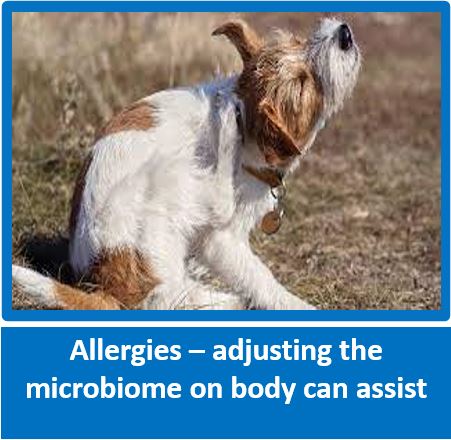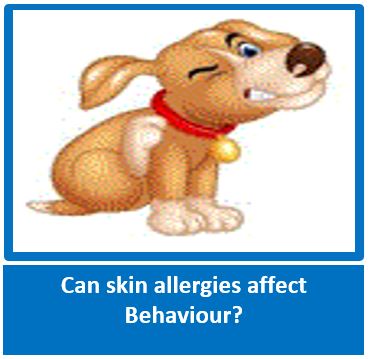
Some breeds are more prone to eye problems than others, and some eye problems are genetic. If you have a cross breed, do consider seeing what the breed make up is, so that if your dog does come from a breed prone to one of these conditions, you can keep an eye out for it. Knowing the breed make up also lets you know why your dog does the things it does, makes you aware of potential behaviour problems and also other genetic diseases that may be breed related. Do have a look at our website for details - www.muttmix.co.za
Some dog breeds that are more prone to eye problems
iheartdogs.com - great site with good Blogs and lots of interesting articles on varied topics - enjoy!
iheartdogs.com - great site with good Blogs and lots of interesting articles on varied topics - enjoy!
Any pup parent knows that gazing into their dog’s eyes will give them a glimpse of the undying love and loyalty that he has for his favorite humans. Dogs’ very lives revolve around us, and we’ll do anything to extend the number of healthy days we get to spend with them.
It’s an unfortunate fact of life that different breeds are prone to different health issues, just like people. Below are 7 dog breeds that are predisposed to eye problems (although, this list is by no means exhaustive). If you’re living with one of the breeds mentioned below, it’s important to pay special attention to the health of their eyes.
It’s an unfortunate fact of life that different breeds are prone to different health issues, just like people. Below are 7 dog breeds that are predisposed to eye problems (although, this list is by no means exhaustive). If you’re living with one of the breeds mentioned below, it’s important to pay special attention to the health of their eyes.
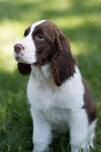
1. English Springer Spaniel
These happy water dogs are prone to developing eye diseases like glaucoma and cataracts. Parents of these pups should look out for symptoms like cloudiness, redness, itching or irritation, according to Embrace Pet Insurance.
These happy water dogs are prone to developing eye diseases like glaucoma and cataracts. Parents of these pups should look out for symptoms like cloudiness, redness, itching or irritation, according to Embrace Pet Insurance.
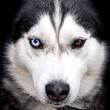
2. Siberian Huskies
Siberian Huskies are prone to a host of genetic eye problems like hereditary or juvenile cataracts, corneal dystrophy, and progressive retinal atrophy (PRA). Due to the prevalence of these three eye conditions in Siberian Huskies, breed registries have been developed specifically to confirm that breeding dogs have had recent eye exams. Read more about these conditions here.
Siberian Huskies are prone to a host of genetic eye problems like hereditary or juvenile cataracts, corneal dystrophy, and progressive retinal atrophy (PRA). Due to the prevalence of these three eye conditions in Siberian Huskies, breed registries have been developed specifically to confirm that breeding dogs have had recent eye exams. Read more about these conditions here.

3. Poodles
These curly-haired cuties are predisposed to glaucoma. This is the result of fluid buildup, “which causes pressure, pain, and eventually blindness,” according to WebMD Pets. However, if caught in time, this condition can be managed with help from your vet.
These curly-haired cuties are predisposed to glaucoma. This is the result of fluid buildup, “which causes pressure, pain, and eventually blindness,” according to WebMD Pets. However, if caught in time, this condition can be managed with help from your vet.

4. Collie breeds
These breeds can develop different severities of Collie Eye Anomaly (CEA), an incurable genetic condition that affects the retina, choroid, and sclera, according to Wikipedia. It can be so mild it doesn’t impact vision, or severe enough to lead to blindness.
These breeds can develop different severities of Collie Eye Anomaly (CEA), an incurable genetic condition that affects the retina, choroid, and sclera, according to Wikipedia. It can be so mild it doesn’t impact vision, or severe enough to lead to blindness.

5. Boston Terriers (and other short-nosed breeds)
With their big, glassy eyes, Boston Terriers can get “Cherry Eye,” which happens when the tear gland protrudes and appears red and round. However, it can be repaired with surgery. Other breeds prone to this condition are Beagles, Bloodhounds, Bulldogs, Bull Terriers, Lhasa Apsos, St. Bernards, and Shar-Pei, according to Animal Planet.
With their big, glassy eyes, Boston Terriers can get “Cherry Eye,” which happens when the tear gland protrudes and appears red and round. However, it can be repaired with surgery. Other breeds prone to this condition are Beagles, Bloodhounds, Bulldogs, Bull Terriers, Lhasa Apsos, St. Bernards, and Shar-Pei, according to Animal Planet.
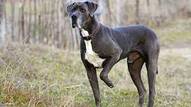
6. Great Danes
These gentle giants have a genetic predisposition for a hereditary disorder called entropion in which the eyelids “roll” inwards. It may sound rather harmless, but entropion causes the tiny hairs along the lash line to drag across the corneal surface of the eye, leading to pain, inflammation, and even vision-impairing scar tissue. Read more about entropion in Great Danes here.
These gentle giants have a genetic predisposition for a hereditary disorder called entropion in which the eyelids “roll” inwards. It may sound rather harmless, but entropion causes the tiny hairs along the lash line to drag across the corneal surface of the eye, leading to pain, inflammation, and even vision-impairing scar tissue. Read more about entropion in Great Danes here.

7. German Shepherds
GSDs have the highest genetic predisposition for Chronic Superficial Keratitis – or Pannus – of any dog breed. It’s believed to be immune-mediated, meaning some cellular malfunction causes the dog’s body to suddenly treat the cornea as foreign material. There is no cure, but there are methods to manage its progression. For more information, click here.
GSDs have the highest genetic predisposition for Chronic Superficial Keratitis – or Pannus – of any dog breed. It’s believed to be immune-mediated, meaning some cellular malfunction causes the dog’s body to suddenly treat the cornea as foreign material. There is no cure, but there are methods to manage its progression. For more information, click here.
Help Support Your Dog’s Eye Health Naturally
!In addition to Chelated Zinc and Vitamin C, our new Project Paws ™ Eye & Vision Support soft chew contains powerful antioxidants including Lutein and Xanthophyll, which help to fight free radicals and reduce oxidative stress. By eliminating free radicals associated with the aging process and reducing the negative effects of oxidative stress, our comprehensive formula promotes long-term ocular health.
!In addition to Chelated Zinc and Vitamin C, our new Project Paws ™ Eye & Vision Support soft chew contains powerful antioxidants including Lutein and Xanthophyll, which help to fight free radicals and reduce oxidative stress. By eliminating free radicals associated with the aging process and reducing the negative effects of oxidative stress, our comprehensive formula promotes long-term ocular health.


